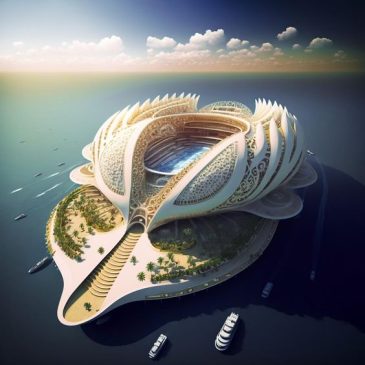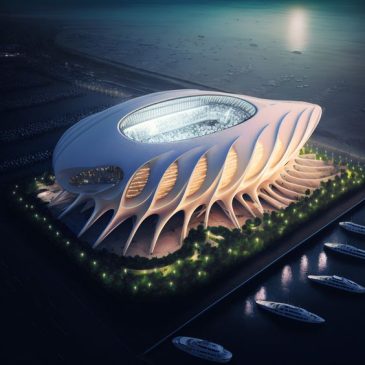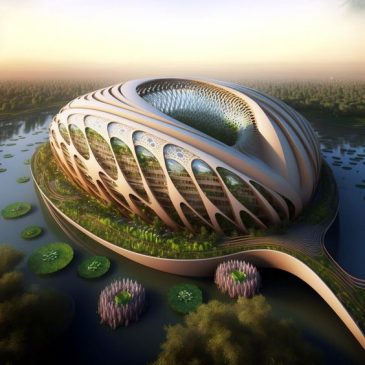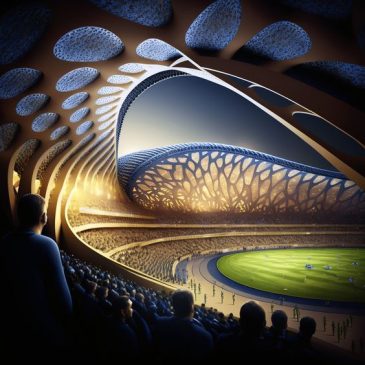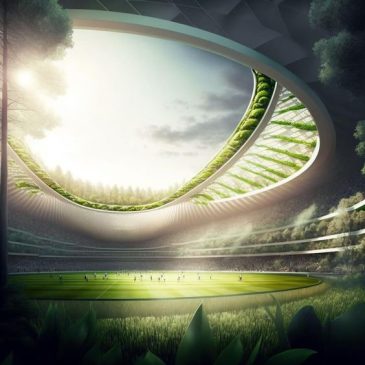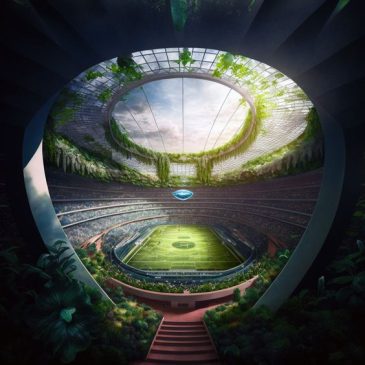Dive into the Future: Nature-Inspired Eco-Friendly Floating Stadiums
OCEANIUMS, envisioned by Vincent Callebaut Architectures, represent a revolutionary concept of floating stadiums that harmoniously coexist with the marine environment. Inspired by nature’s design principles, these Oceaniums aim to create sustainable, environmentally-friendly structures using a combination of biosourced and recycled materials. The project’s key objective is to address ecological concerns while providing innovative and versatile venues for various events and activities. This article delves into the details of this visionary project and its potential impact on the future of sustainable architecture.
At the heart of the Oceaniums project lies the concept of biomimicry, a design approach that seeks inspiration from nature’s processes, forms, and systems. By emulating the efficiency and resilience of natural ecosystems, these floating stadiums aim to minimize their ecological footprint while maximizing functionality and adaptability. The architecture of Oceaniums draws inspiration from marine organisms, enabling them to seamlessly integrate into the surrounding marine environment.
A crucial aspect of the Oceaniums’ construction is the exclusive use of biosourced and recycled materials. These materials include solid wood from responsibly managed forests, recycled aluminum, green algae, and plastic waste collected from the infamous 7th continent, known as the Great Pacific Garbage Patch. By employing recycled materials, the project contributes to reducing the environmental burden of waste while fostering a circular economy.
The implementation of green algae plays a pivotal role in the sustainable functioning of Oceaniums. These floating stadiums are equipped with specially designed algae bioreactors integrated into their structure. The algae not only help sequester carbon dioxide from the atmosphere but also aid in purifying the surrounding seawater. This symbiotic relationship with marine life ensures that Oceaniums actively contribute to ocean conservation efforts.
Oceaniums are designed with a high degree of modularity and flexibility, allowing them to adapt to different functions and activities. From sporting events and concerts to conferences and exhibitions, these floating stadiums can be transformed to meet various requirements. The modular design also facilitates ease of maintenance and expansion, ensuring their long-term viability.
By utilizing biosourced and recycled materials and integrating green algae bioreactors, Oceaniums showcase a commendable effort to combat marine pollution and promote sustainability. Moreover, these floating stadiums serve as multi-functional spaces that bring communities together to appreciate and protect marine ecosystems. By raising awareness about ocean conservation, the project aims to inspire collective action toward a cleaner and healthier marine environment.
The OCEANIUMS project by Vincent Callebaut Architectures represents a pioneering step toward sustainable and eco-friendly architecture. These floating stadiums embody the principles of biomimicry and circular economy, emphasizing the importance of working in harmony with nature. By using biosourced and recycled materials and embracing green algae integration, Oceaniums showcase a blueprint for future construction projects that prioritize environmental stewardship and responsible design. With their positive environmental impact and versatility, these stadiums of the oceans can become iconic symbols of our commitment to safeguarding our planet’s most precious resource – the oceans.
Hits: 6
